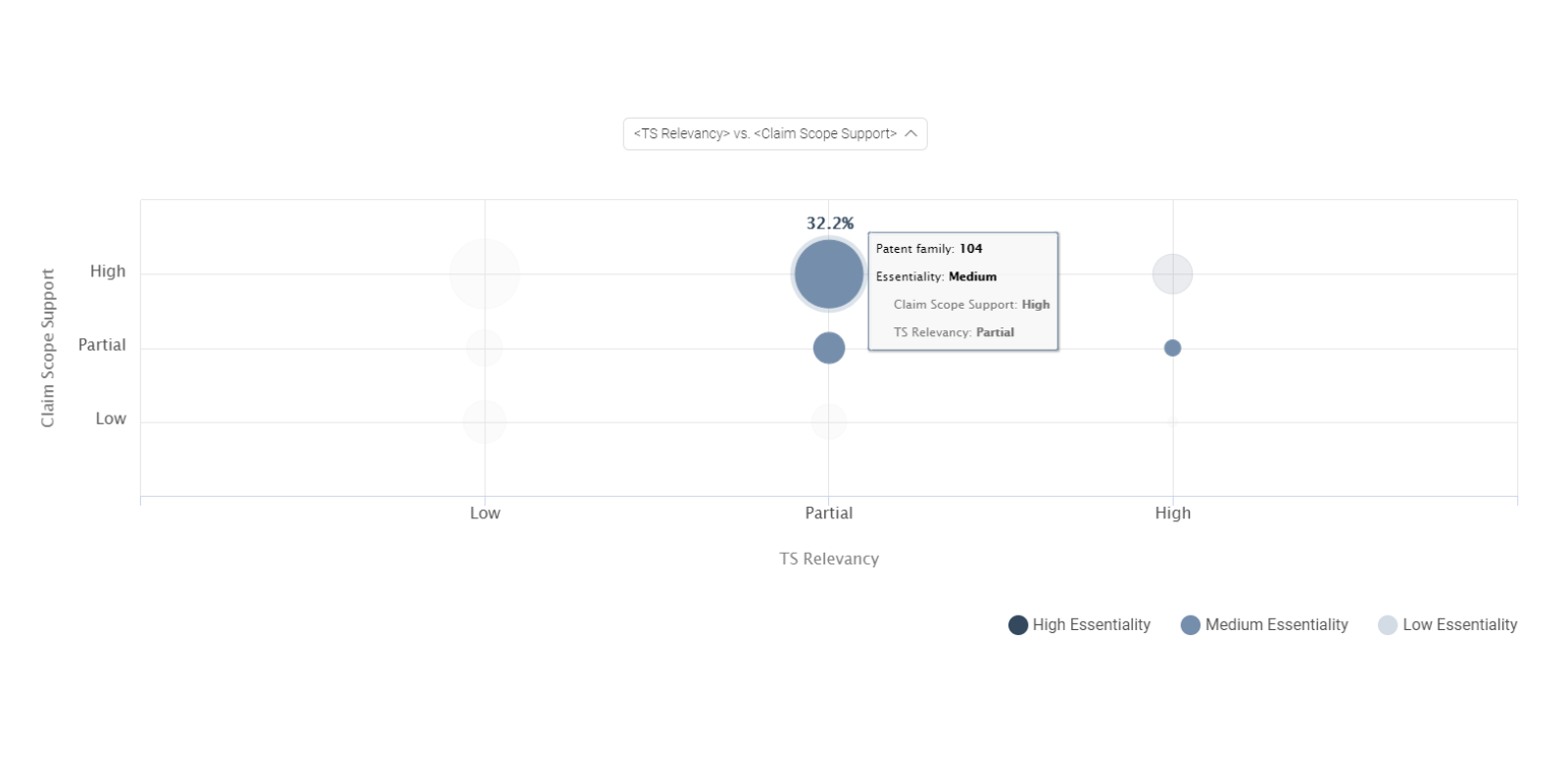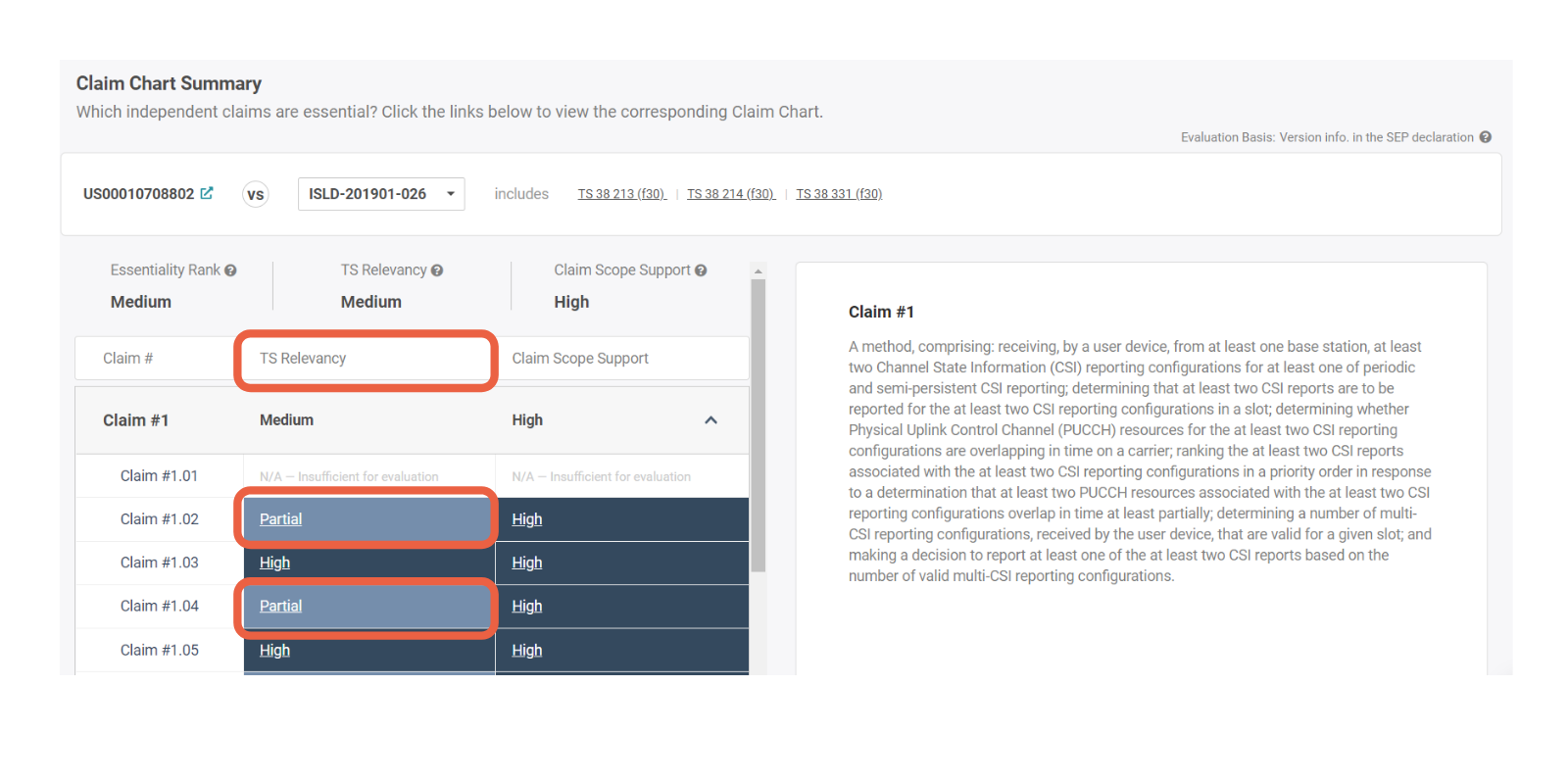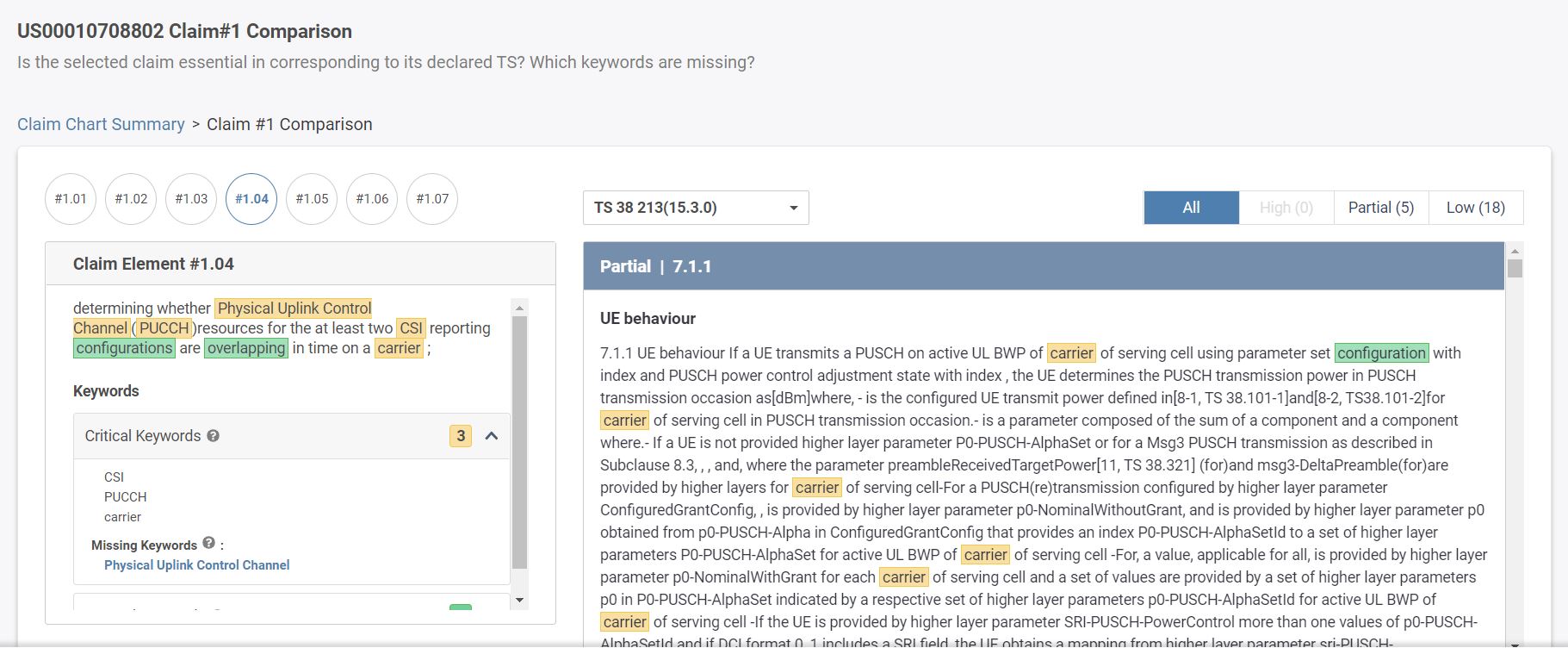Table of contents
- Introduction
- Why Is This?
- Other Reasons for Over-Declaration
- What Can Be Done?
- Utilize SEP Data Models
- Perform SEP Claim Mapping
- Concluding Thoughts
Introduction
Anyone starting to read up on standard essential patents will soon be shocked to discover that a surprising amount of patents that had been declared as standard “essential” patents are actually NOT essential.
A Standard Essential Patent (SEP) is a patent that protects a technology that is necessary, namely “essential” to a standard. A “standard” refers to a standard derived from technical specifications for specific technologies, such as radio technology. SEPs protect innovative technologies that have taken great effort in achieving.
You can also check out our article on the basics of standard essential patents here.
This paradoxical situation where “a patent is coined as ‘essential’ but may not be essential” leads to the phenomenon known as “over-declaration,” and it is far more common than one could imagine.
The paper entitled “Over-Declaration of Standard Essential Patents and Determinants of Essentiality” (Stitzing et. al., 2017), stated:
“A recent communication from the European Commission (2017) reports the widespread problem of over-declaration, citing evidence suggesting that only half, or up to 90 percent, of declared patents to key technologies may be truly essential. ”
The results from another report from the IP consulting firm Fairfield Resources International indicated that only 50% of the patent families examined “have at least one patent judged essential or probably essential.”
Why Is This?
To gain a better understanding of why this is happening, we have to go back to the Standard Setting Organizations (SSOs) that are responsible for setting the standards for different types of technology.
Let’s take a closer look at one of these SSOs—the European Telecommunications Standards Institute (ETSI). According to the ETSI IPR Policy:
“During the proposal or development of a standard, ETSI members must inform the Director General in a timely fashion if they are aware that they hold any patent that might be essential.”
Also, on the same page, regarding their IPR database, the policy states:
“The ETSI IPR ONLINE DATABASE allows, for information, public access to patents which have been declared as being essential or potentially essential, to ETSI and 3GPP standards.”
The key point here is the phrases “might be essential” and “potentially essential.”
Of course, for ETSI, such a broad definition helps it to cast a wider net, which is likely meant to help the organization to bring in any and all possible SEPs.
At the same time, SSO members who are also patent holders may feel compelled to declare their patents, even if they may have some doubts about them, since failing to do so could lead to even bigger problems down the road, including losing the enforceability of a patent.
Therefore, many patent holders will declare as early as possible, even when the patent application is still in the prosecution process and has yet been granted.
But there are other reasons that over-declaration occurs.
Other Reasons for Over-Declaration
There are several inadvertent causes for over-declaration mentioned in the reports mentioned previously. These include:
- Dynamic development of technology and changing standards. A patent that was initially declared essential may no longer end up being essential to a certain technology or the finalized standard.
- If a patent’s scope is narrowed down during prosecution, it may no longer be considered essential.
- If a patent application is rejected, it cannot be essential.
Unfortunately, we cannot overlook the other causes that arise from some patent holders’ intentional behavior:
- Some less scrupulous patent owners may deliberately declare many of their patents to be essential in order to gain some type of benefit or business advantage.
- Some may want to overstate the number of SEPs they have to present a better picture of their business (perhaps to attract investment) or simply to present a “stronger” portfolio during licensing negotiations.
No matter what the motivations or reasons may be, the end result is over-declaration.
What Can Be Done?
Some have suggested that the current system for setting standards must be overhauled, or at least modified. They point to the fact that when it comes to SEPs, it is the patent holders themselves that declare the patents as essential and that there is currently no official independent process to verify this.
At the same time, since technology continues to change so quickly, updates to these standard-setting systems must be made just as quickly to keep pace with this rapid evolution. Yet, realistically speaking, any changes to these established SSOs like ETSI will likely not occur all that quickly.
True, but this doesn’t answer the question — what can be done?
Summarizing the reasons we listed in the section above, we can see that the over-declaration issue itself is a symptom that stems from two main causes:
- Lack of real-time and transparent SEP data.
- Difficulty in determining the essentiality of each SEP.
If we can alleviate, if not eliminate, these two pain points, we can reduce the degree to how over-declaration obscures the SEP landscape, saving both the time, effort, and money of professionals working with SEPs.
Let’s take a look at some ways to mitigate the challenges that arise from the over-declaration phenomenon.
Utilize SEP Data Models
Having a data model that collects and analyzes ETSI SEP data would be extremely beneficial in monitoring the SEP landscape. Whether to view the global landscape for certain radio technologies, such as 5G SEPs:

Or to view the SEP portfolio for a certain SEP-holding company:
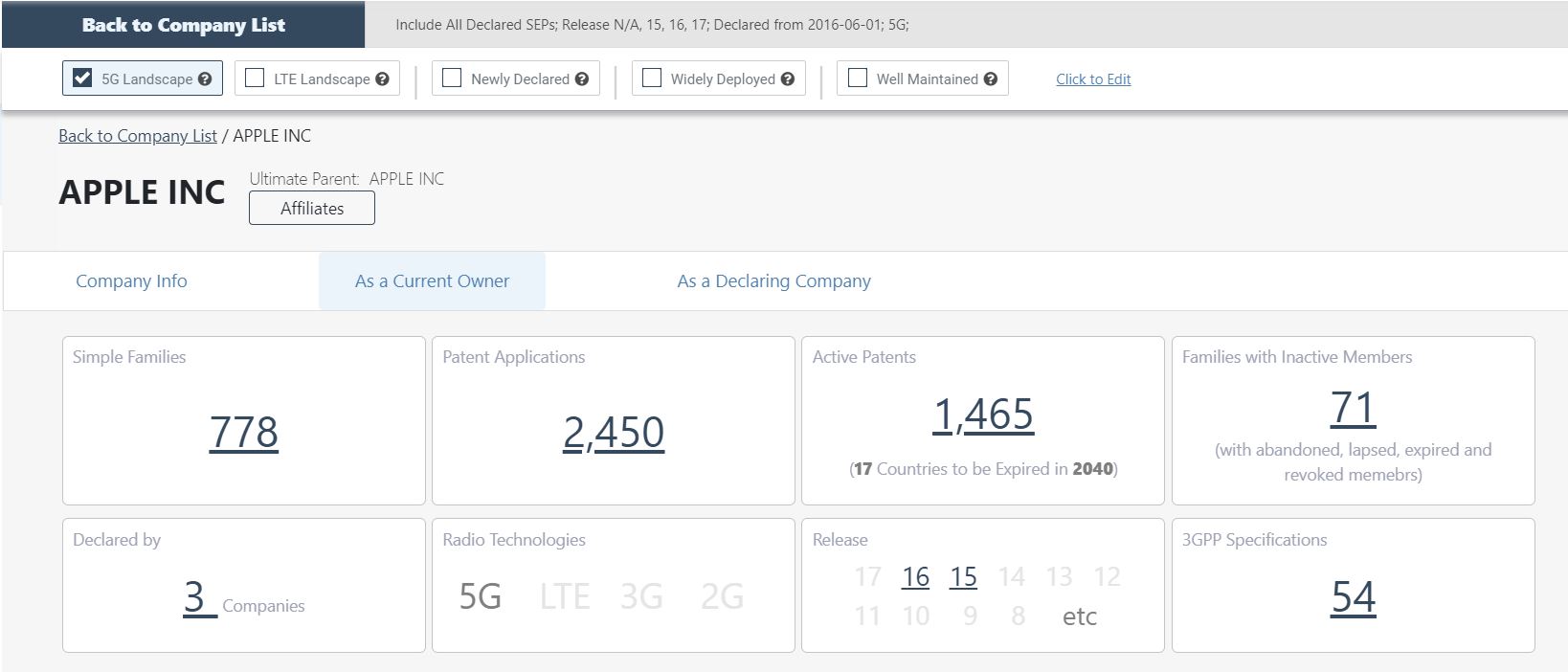
Transparent and accessible SEP data can reduce the time and effort needed to monitor, dig out, and verify the information for each SEP such as its legal status or jurisdictions.
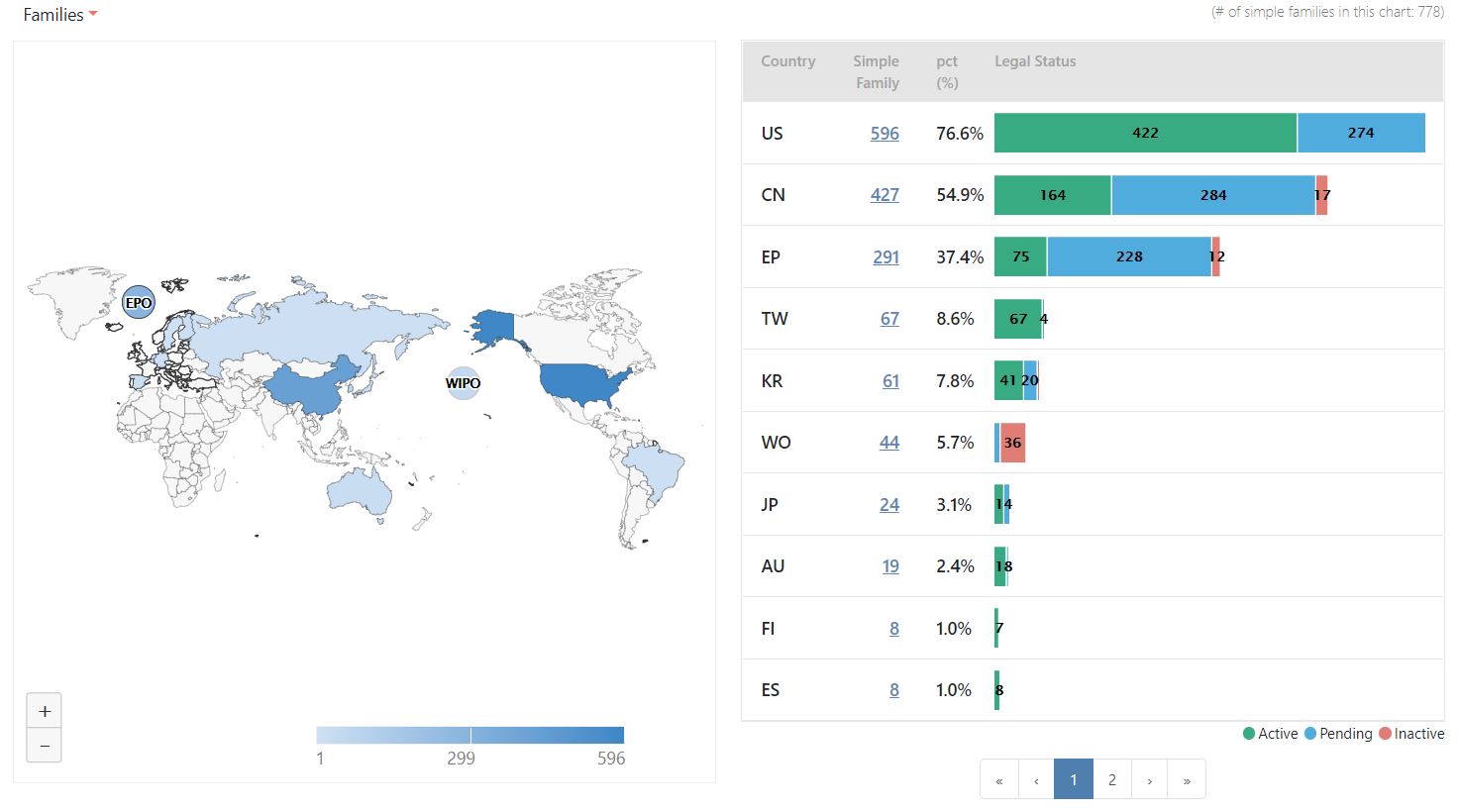
This model has yielded some insights into the 5G SEP landscape, which are certainly of interest to those involved in this industry. We can now move forward by sifting out the SEPs that can be enforced (determining granted patents from applications) and their jurisdictions, bringing us closer to the true status of a SEP landscape or a certain SEP portfolio.
Perform SEP Claim Mapping
After filtering out a good proportion of the noise, is there a way to alleviate the time and effort that technical experts and IP professionals spend on deciphering the essentiality of SEPs?
Normally, to determine a SEP’s essentiality, much scrutiny and examination of a SEP and its corresponding technical specification/standards must be conducted by domain experts and IP professionals. As patent claim language differs from technical language, experts must decipher whether a SEP is “essential” to its declared standard which takes much time and great effort.
A way to reduce some of the time and effort required is to conduct preliminary keyword mapping of a SEP’s claims to its declared technical specifications. This method allows examiners to determine which SEPs in a portfolio need more scrutiny and which aspects need more examination.
If the critical technical terms used in defining a technical specification can also be found in a patent’s claims, then we can separate those that have low relevancy from those with a higher correlation to its technical specification(s), known as “TS Relevancy” in Patentcloud’s SEP OmniLytics. Coupled with “Claim Scope Support,” which is mapping a patent’s claims to its specifications, we have two indicators that are combined to derive the “Essentiality Rankings.” For more, we have created an infographic explaining how our new indicators work here.
We can see the Essentiality Ranking of Nokia’s active 5G SEP portfolio for RAN 1 SEPs deployed in the U.S. below:

As SEP OmniLytics’ Essentiality Ranking is derived from the TS relevancy and Claim Chart Support indicators, we can further inspect how each indicator contributes to the rankings. If you need to examine the SEPs within this portfolio (which includes 385 active patents in 338 simple families), you can use this chart below to see which indicator many need more scrutiny. By looking at this chart and the claim mapping for each SEP, we can see that this group has a higher Claim Scope Support ranking, but is only partially mapped to their corresponding technical specifications. This means that more time and effort may be required in examining the TS Relevancy instead of Claim Scope Support.
Experts can now discover the SEPs that will need more interpretation to decipher their essentiality using simple logic and complex algorithms.
Concluding Thoughts
For the time being, over-declaration seems to be one part of the SEP ecosystem that won’t be going away anytime soon.
Fortunately, with the help of data models, big data, and AI, updated and clean SEP data can now be factored in, at least in some ways and in some cases, to deliver a better picture of the SEP landscape and enable better, data-driven business decisions to be made.
For more reading on how to filter out the noise from the signals in SEP data, check out our case analysis article on LG Electronics’ SEP portfolio where we walk you through the process of sifting out the top-tier SEPs and digging up its diamond SEP portfolio.
Explore SEP OmniLytics yourself for more SEP insights.

